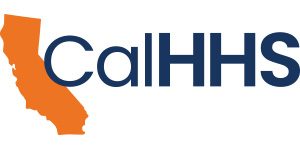FOR IMMEDIATE RELEASE
CONTACT: CDPHpress@cdph.ca.gov
SACRAMENTO – California Health and Human Services Secretary Dr. Mark Ghaly today announced new plans for COVID-19 testing in California, including updated testing guidance, new requirements for health plans to cover testing, and the new co-chairs of the state’s COVID-19 Testing Task Force.
“Testing is a critical tool that helps us diagnose and treat those who become infected by COVID-19. Testing also helps us understand how COVID-19 moves through our communities so we can identify areas where transmission is occurring. Today we are redoubling our commitment to ensure testing remains a top priority for California,” said Dr. Ghaly. “Our testing capacity has increased exponentially in recent months. At the same time, new national supply chain challenges and large volumes of specimens sent to commercial laboratories have resulted in growing delays in processing times. Consequently, it is critical we continue to be deliberate and creative about testing. We must do this so that testing is readily available and affordable to those who need it, especially those communities experiencing the worst impacts of COVID-19 and those who are at the highest risk. Testing is a responsibility of our entire healthcare delivery system. Clinics, doctors, and other care sites should provide convenient testing to their patients who need a test.”
Today’s announcements include:
Testing Prioritization
The California Department of Public Health released updated testing guidance that focuses on testing hospitalized individuals with signs or symptoms of COVID-19 and people being tested as part of the investigation and management of outbreaks, including contact tracing. The testing guidance also prioritizes individuals who have COVID-19 symptoms and individuals without symptoms who fall into high-risk categories, including people who live and work in nursing homes, homeless shelters and prisons, healthcare workers, and patients in hospitals. The new guidance will ensure that Californians who most need tests get them even if there are limited supplies.
New Testing Task Force Co-Chairs and Goals
Two new co-chairs will lead California’s Testing Task Force, the state’s private-public partnership that has taken the lead role in expanding both the collection and processing of specimens for COVID-19 testing. Leading the task force starting immediately are Dr. Gilbert Chavez, founding chief of the California Department of Public Health’s Center for Infectious Diseases, and Dr. Bechara Choucair, senior vice president and chief health officer for Kaiser Foundation Health Plan, Inc. Chavez, the state’s former epidemiologist who has led the response to disease outbreak and emerging health threats, is coming out of retirement to help lead the task force. Dr. Choucair oversees Kaiser’s efforts focused on addressing the social health of its 12.4 million members and the 68 million people who live in the communities it serves.
The task force, which was launched in April, created testing locations where there were none, expanded laboratory capability and helped build a testing supply pipeline, scaling up from just 2,000 tests per day to more than 100,000 tests per day. Under the leadership of Chavez and Choucair, the task force will recommend testing priorities, continue to create equitable access to testing and support for state-operated community testing sites, and review options to lower overall testing costs.
Health Plan Coverage of Testing
To help ensure that testing is widely available to all Californians, the state is working collaboratively with health insurers to provide reimbursement for testing and with private providers to create additional in-office testing capacity. With more providers performing tests in the office rather than referring patients to labs or testing sites, the state would have more resources to focus on underserved and high-risk populations. The state is preparing to file emergency regulations that will classify COVID-19 testing as medically necessary urgent care for essential health workers and people with symptoms of or possible exposure to COVID-19.
###


